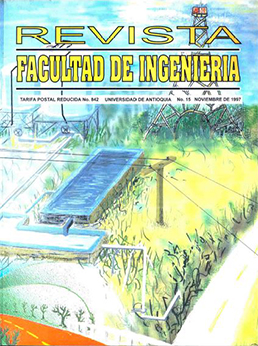Consideraciones acerca de las interacciones entre el metal de implante ortopédico y el cuerpo humano
DOI:
https://doi.org/10.17533/udea.redin.325741Resumen
Los materiales de implante más utilizados son el acero inoxidable AISI 316L, las aleaciones de CoCr y lo aleación Ti6Al4V y en este mismo orden está su costo, la resistencia a la corrosión y a la fatiga. En todas ellas su elevada resistencia a la corrosión se debe a la formación de una delgada película de óxido (de cromo o titanio, según el caso), la que puede romperse si las condiciones mecánicas lo permiten. Como la posibilidad de repasivación al interior del cuerpo humano es baja por la escasa presencia de oxígeno, habrá una corrosión localizada en el punto de rotura de dicha película, que inducirá fenómenos de corrosión por fricción, por hendedura y corrosión fatiga. En este trabajo se discuten los diversos tipos de respuesta del cuerpo a los implantes, como el remodelamiento y la osteólisis del hueso y los efectos de sitio lejano, en especial los inmunológicos y los neoplásicos.Descargas
Citas
SANDVIK AB. Sandvik SAF 2507. The High Performance Duplex Stainless Steel for Aggressive Chloride-containing environments. Technical Reports. 1,22 ENG.
FRIEDMAN, R.; BLACK, J.; GALANTE, J.; JACOBS, O. and SKINNER, H. Instructional Course Lectures. The American Academy of Orthopaedic Surgeons. Curren! Concepts in Orthopaedic Materials and Implants Fixation. The Journal of Bone and Joint Surgery. Incorporated, Vol. 75-A, No. 7, Jul 1993, pp. 1086-1109. DOI: https://doi.org/10.2106/00004623-199307000-00017
FRAKER, A. Corrosion of Metallic Implants and Prosthetic Devices. Metals Handbook. 9th Edition. 1993
LANGKAMER, V.; CASE, G.; HEAP, P.; TAYLOR, A. COLLINS, C.; PEARCE, M. and SOLOMON, L. Systemic Distribution of Wear Debris after Hip Replacement. A Cause for Concern. The British Society of Bone and Joint Surgery. Vol. 74-B, No. 6, Nov. 1992, pp:831-839. DOI: https://doi.org/10.1302/0301-620X.74B6.1447243
Descargas
Publicado
Cómo citar
Número
Sección
Licencia
Los artículos disponibles en la Revista Facultad de Ingeniería, Universidad de Antioquia están bajo la licencia Creative Commons Attribution BY-NC-SA 4.0.
Eres libre de:
Compartir — copiar y redistribuir el material en cualquier medio o formato
Adaptar : remezclar, transformar y construir sobre el material.
Bajo los siguientes términos:
Reconocimiento : debe otorgar el crédito correspondiente , proporcionar un enlace a la licencia e indicar si se realizaron cambios . Puede hacerlo de cualquier manera razonable, pero no de ninguna manera que sugiera que el licenciante lo respalda a usted o su uso.
No comercial : no puede utilizar el material con fines comerciales .
Compartir igual : si remezcla, transforma o construye a partir del material, debe distribuir sus contribuciones bajo la misma licencia que el original.
El material publicado por la revista puede ser distribuido, copiado y exhibido por terceros si se dan los respectivos créditos a la revista, sin ningún costo. No se puede obtener ningún beneficio comercial y las obras derivadas tienen que estar bajo los mismos términos de licencia que el trabajo original.










 Twitter
Twitter